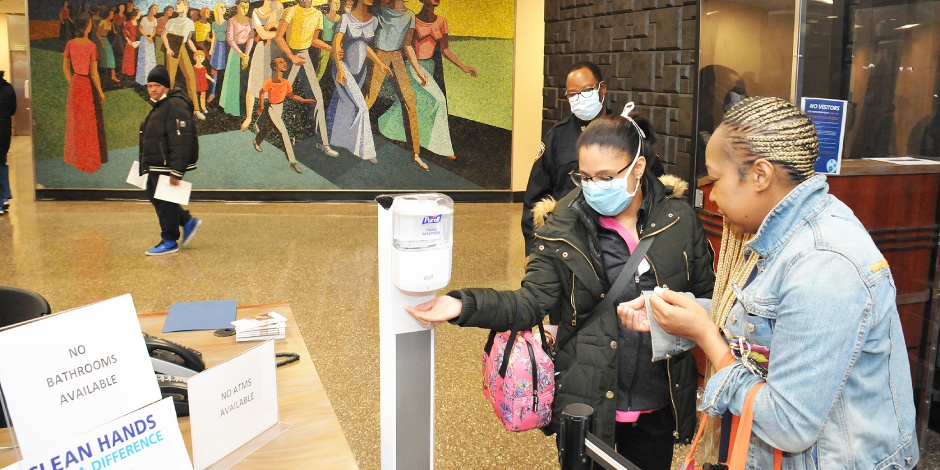NYC Health + Hospitals Implements Guidelines To Further Reduce Potential Spread of COVID-19 Within Its Facilities
Recommendations help advise healthcare providers on eliminating unnecessary testing and treatment in an effort to reduce exposure to COVID-19
Mar 16, 2021

NYC Health + Hospitals today announced it’s implemented guidelines system-wide to further reduce potential spread of COVID-19, keeping staff and patients safe during the pandemic. The COVID-19 guidelines advise healthcare providers on eliminating unnecessary testing and treatment in an effort to reduce exposure to COVID-19. The guidelines also incorporate specific, evidence-based recommendations clinicians should consider to utilize limited resources wisely, such as blood transfusions. The recommendations adopted by NYC Health + Hospitals were decided through an internal survey and dialogue with clinicians and safety officers throughout the system. These recommendations were inspired by the ABIM Foundation’s ‘Choosing Wisely’ campaign, a broader initiative created to identify and reduce unnecessary testing, treatment, and procedures. The ‘Choosing Wisely’ recommendations, created by partnering medical specialty societies, help clinicians choose paths of care that are truly necessary and are free from harm to the patient.
“At NYC Health + Hospitals, we don’t believe in just following the status quo standard-of-care for patients, but instead questioning what we consider the norm as we continue to make healthcare safer, more convenient, and more efficient for all patients,” said NYC Health + Hospitals Chief Value Officer Hyung (Harry) Cho, MD. “These five first recommendations are just the beginning for our work to advance the ideals of the Choosing Wisely campaign. We look forward to further collaborating with the ABIM Foundation and shifting some norms of care.”
“These recommendations help guide clinicians to maximize benefits for patients, while reducing unnecessary harm and discomfort,” said NYC Health + Hospitals Patient Safety Officer Mona Krouss, MD. “We’re happy for the opportunity to work with colleagues who have the same patient-centered, value-based mission in mind to develop this guidance and further fulfill that mission.”
The five adopted recommendations include:
- Avoid performing tracheal intubation based solely on oxygen requirement, and instead consider trajectory of deterioration and candidacy for less invasive ventilation or proning;
- Not routinely placing central lines as an alternative to intravenous therapy. If a central line is necessary, removal or replacement should be considered to reduce potential for infection;
- Reducing routine daily laboratory testing if a patient’s clinical labs are stable, and avoid obtaining nonurgent labs in separate blood draws if they can be batched together;
- Not ordering routine daily chest X-rays in patients with COVID-19; and
- Not using bronchodilators, medications that relax muscle bands that tighten around your airways, unless there is active obstructive airway disease.
“I commend NYC Health + Hospitals on its adoption of recommendations system-wide in an effort to continue to reduce potential exposure to COVID-19 in our City’s hospitals,” said Council Member Carlina Rivera, Chair of the Committee on Hospitals. “These new guidelines will not only protect our hospitals’ doctors, nurses, administrators and staff, but will also enable and encourage safe pathways of care for patients as we continue to fight the pandemic.”
The recommendations were shared with executive leadership and clinical departmental leadership system-wide so that all can take advantage of figuring out what tests and procedures may be appropriate for individual patient.
The initial COVID-19 Recommendations, written by Dr. Cho and Dr. Krouss, were published in June 2020 in the Journal of Hospital Medicine. NYC Health + Hospitals’ Office of Quality further refined these recommendations for the system’s use, which involved a systemwide survey, a review of the literature, the strength of clinical evidence, the goal of avoiding patient harm, and the potential for avoiding staff harm.